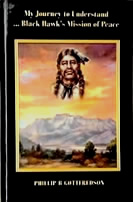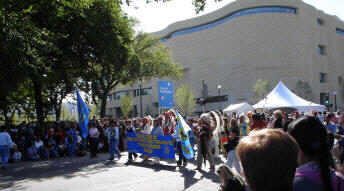 Native Nations Procession Opening Ceremony First Americans Festival
Native Nations Procession Opening Ceremony First Americans Festival
The writer is Phillip B Gottfredson, the author of My Journey to Understand Black Hawk's Mission of Peace.
In my quest to understand the Native American peoples of North America, I believed that attending the Grand Opening of the National Museum of the American Indian, September 21, 2004, was a crucial step. This event was not just a starting point for me, but a testament to my commitment to understanding the First Nation people. This commitment was crucial to my research of the Black Hawk War in Utah and writing my book My Journey to Understand Black Hawk's Mission of Peace. As relayed to me by several Natives, this event is believed to be the fulfillment of a 500-year-old Hopi prophecy of all Indian nations coming together as one.
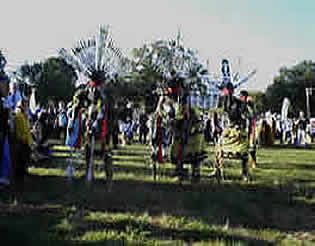
The National Mall in Washington, DC, was filled with thousands of Indigenous people from around the world, from the Washington Monument to the Nation's capitol, each tribe represented in the procession dressed in their finest regalia, dancing to the beat of drums as they slowly proceeded to the National Museum of the American Indian for the Grand Opening Ceremonies. The procession route was lined with thousands of spectators respectfully applauding every tribe as they passed by. It was a historic moment, and everyone there sensed it was so. Adding to my emotions, I was taken aback even more when I saw the grandmothers in the procession in wheelchairs. It spoke a thousand words of the significance of this great event that even the most aged and fragile were so profoundly compelled to participate.
The opening ceremonies began at the Four Directions Stage before the nation's capitol building. The Hopi Honor Guard brought on stage the flags of the different Nations, and Black Eagle sang the Flag Song.
A welcome was given by Lawrence M. Small, secretary of the Smithsonian Institution followed by remarks from; His Excellency Alejandro Toledo (Quechua), President of Peru, The honorable Ben Nighthorse Campbell (Northern Cheyenne), United States Senate (Colorado), The Honorable Daniel K. Inouye, United States Senate (Hawaii). Special guests were; Sheila P. Burke, Dwight Gourneau (Turtle Mountain Chippewa), Julie Johnson Kidd, Alvin M. Josephy, Jr., Norbet Hill, Jr., (Oneida), Phillis Young (Standing Rock Sioux)
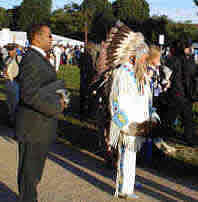 Ben Nighthorse Campbell
Ben Nighthorse Campbell
The festival then began and continued non stop for the following week. Thousands upon thousands of people continued to pour into the National mall. The lines to the Museum were long and endless from morning to night day after day.
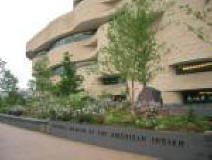 National Museum of the American Indian
National Museum of the American Indian

The Smithsonian spent two hundred and nineteen million dollars on this unique structure. Upon entering the building, you will enter a vast open space when you enter the museum. In the center is a ceremonial circle where pow-wow drummers and dancers perform, filling the beautiful structure with the sounds of celebration. Looking up four stories, you see a circular opening in the rotunda where natural light spills down in the circle's center. A copper wall surrounds the circle. Words can't describe the sacred feeling of this monument to the American people.
On the different levels of the structure, the various galleries displayed the collections from many Native Nations. I came across the Anishinaabe exhibit. There I read the words, ""The Seven Teahings." Honesty, Love, Courage, Truth, Wisdom, Humility, and respect. I stood there in disbelief. All my life I had been taught that the "Indian" was savage, cruel, dishonest, muderous, unintelligent, barbarian. This was what I was taught in school. So I wondered, how could it be that an ancient society could know the highest virtues of man before the superior whites did? I had to chuckle as my eyes were opening to the truth about not only Native culture, but my own. How we have dehumanized and demoralized a great nation.
I couldn't help the tears as I paused with reflection on the historical past, the time when they were called "savages" by the Euro-settlers. My time spent at this historic event was like that for me. As I became personally acquainted with Chiefs of different tribes and spoke with various people from all over the continent, time and time again, I heard them express their pride for this moment. It was a time of healing, reflection, and a new vision of the future. It was also a time of discovery for all, learning from each other that they are the survivors of the horrible past, embracing one another, exchanging stories, and renewing bonds they once had many years ago. At long last, everything has come full circle in a celebration of renewed hope.
I concluded my week-long experience by attending a stage production called "SPIRIT The Seventh Fire." I could have seen this ten or more times over. The actors, the regalia, the dancers, the music, and the message were timeless and inspired. Audiences packed the house every night, and standing ovations that seemed would never end. And what could have topped this? As we were leaving, the cast stood at the gate to shake every hand and sign autographs.
Conceived and Produced by Peter Buffett. Executive Producer was Entertainment and Concert Promotion, Inc. Creative direction by Peter Buffett and Jody Ripplinger. Music composed by Peter Buffett and Chief Hawk Pope. Original choreography by the Spirit Performers. Production and design by Chris Jones. Film direction by Frank Anderson. Story by Peter Buffett, Jody Ripplinger, William Morgan and Chief Hawk Pope. Production development by Image Technologies Corp.. Sound design and production Associate Chris Anderson.

The message was simple yet profound especially for Indigenous people, "You must become the rock the river cannot wash away. Speak your voice. Dance."
In conclusion
We hated to leave this moment and return to our daily lives again. My friend Marcelino Tabango (Inca) shared this experience with me, and we walked down the National Mall together. The moon was not quite full; the Mall was empty now where once thousands of people had gathered in this grand celebration. We talked about the fabulous things we had seen and heard and how the events opened our hearts and minds to the possibilities of a new beginning for the Native American people. I looked at Marcelino and saw a newness about his spirit.
I reflected on the day I walked from the Lincoln Memorial, where I read his words, "All men are created equal." I visited the war memorials and the great museums, which all overwhelmed me emotionally. I wept when I stood in front of the Constitution and Bill of Rights at the National Archives. I pondered the greatness of the human spirit, the courage, and the power that even one person can have to make a difference. I stood where Martin Luther King gave his speech, "I Have a Dream," and thought about how this inspired man had helped open the way for significant events such as this to happen in our time, "free at last...."
"Hear The words of the Tecumseh: The seventh generation will bring my people back... We are the seventh generation, we are like seeds in the rich earth after a hard winter."
One more remarkable and personal moment happened when I spoke with a Tribal Elder standing alone. I felt so compelled to talk to him. I found the courage to approach him. I introduced myself and told him I was on a quest to understand the Native American people. To my surprise, he took hold of my hand and said, "You need to pray to the Creator and ask him what your purpose is. Whatever the answer he gives you, follow it and never look back." The Elder was Tuscarora Chief Leon Locklear, Tuscarora, Bear Clan, of the Tuscarora Nation and Tribal Government of North Carolina. His wise words burn deep in my soul to this day.
"There is a road in the hearts of all of us, hidden and seldom traveled, which leads to an unknown, secret place." - from "Spirit and the Seventh Fire"
See Phillip B Gottfredson; Heart of Mayan Country
